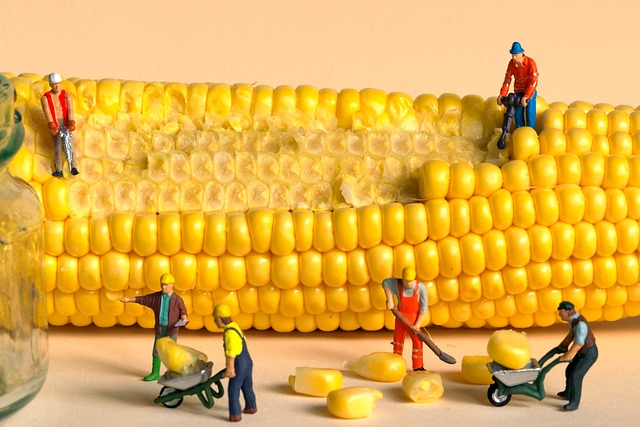Image by Vinzenz Lorenz M
Cob construction, an ancient building technique, is gaining popularity today as a sustainable and eco-friendly alternative to conventional construction methods. Cob, made from a mixture of clay, sand, straw, and water, has been used for centuries by communities around the world to build sturdy and energy-efficient homes. One of the many advantages of cob is its low environmental impact: it requires minimal energy to produce the materials and creates little waste. Furthermore, cob structures have excellent thermal mass properties that allow them to naturally regulate indoor temperature, reducing the need for artificial heating or cooling.
Unlike more traditional building materials like concrete or bricks that consume significant amounts of energy during production and release harmful pollutants in the process, cob is entirely organic and biodegradable. This makes it an ideal choice for those looking to construct green buildings in alignment with principles of sustainability. Cob walls are typically thick and provide effective insulation by absorbing heat during the day and releasing it at night when temperatures drop. As a result, cob houses are noticeably cooler in summer and warmer in winter than their counterparts constructed with other building methods.
Another unique characteristic of cob construction is its versatility. The flexibility of this material grants builders creative freedom to shape walls into any form imaginable – curved lines, multilevel designs – limited only by their imagination! Moreover, cob can be integrated seamlessly with other natural elements such as wood or stone accents to create aesthetically pleasing exteriors that blend harmoniously with surrounding landscapes. For individuals interested in do-it-yourself projects or community-building
Basic principles
Cob is a natural building material made from clay, sand, straw, and water. It is mixed together and applied to walls by hand, without the need for forms. Cob walls are typically thick and strong, making them ideal for building sustainable and durable structures.
Tools and materials
The basic tools and materials you will need for cob construction are:
- Clay
- Sand
- Straw
- Water
- Tarp
- Mixing shovels
- Tamping tools
- Finishing trowels
- Other tools (wheelbarrow, garden hose, etc.)
Construction steps
- Prepare the foundation. The foundation for a cob building should be strong enough to support the weight of the structure. A concrete slab is a common foundation type for cob buildings.
- Mix the cob. The cob mix should be made up of approximately 1 part clay, 2 parts sand, and 3 parts straw. Add water as needed to create a moist but not sticky mix.
- Apply the cob to the walls. Start by applying a thin layer of cob to the foundation. Then, begin stacking cob balls on top of each other, tamping down each ball to create a solid wall. Stagger the joints between the cob balls to create a stronger wall.
- Install windows and doors. Frame out windows and doors in the cob walls. Install the windows and doors according to the manufacturer’s instructions.
- Finish the interior and exterior of the building. Once the walls are complete, you can finish the interior and exterior of the building. This may involve adding insulation, drywall, plaster, and other finishes.
Tips and tricks
- Use a good quality clay. The clay should be sticky and free of rocks and other debris.
- Tamp down each cob ball thoroughly. This will help to create a strong and durable wall.
- Stagger the joints between the cob balls. This will help to create a stronger wall.
- Keep the cob moist while you are working with it. If the cob dries out, it will become difficult to work with and may crack.
- Protect the cob walls from rain and direct sunlight while they are drying.
- Cob walls can take several months to fully dry. Be patient and don’t rush the process.
Final Thoughts
Cob construction is a versatile and affordable method of construction. Cob buildings are strong, durable, and energy-efficient. If you are looking for a sustainable and unique way to build your home, cob construction is a great option.
For more detailed information on cob construction, I recommend the following resources:
- The Cob Builder’s Handbook by Becky Bee
- Cob Architecture: Building with Earth by Ianto Evans
- Natural Building with Cob by Michael Smith
Here are some additional tips for beginners:
- Start with a small project, such as a garden shed or chicken coop. This will give you a chance to learn the basics of cob construction without making a big investment.
- Find a mentor or take a cob building workshop. This is a great way to learn from experienced builders and get hands-on experience.
- Don’t be afraid to experiment. Cob is a forgiving material and there is no one right way to build with it.
- Have fun! Cob building is a rewarding experience and it’s a great way to connect with your natural environment.





